Couples turn to private sperm donors, shunning IVF clinics
Couples and singles are bypassing fertility clinics and turning instead to private sperm donors via Facebook. But are they entering a minefield?
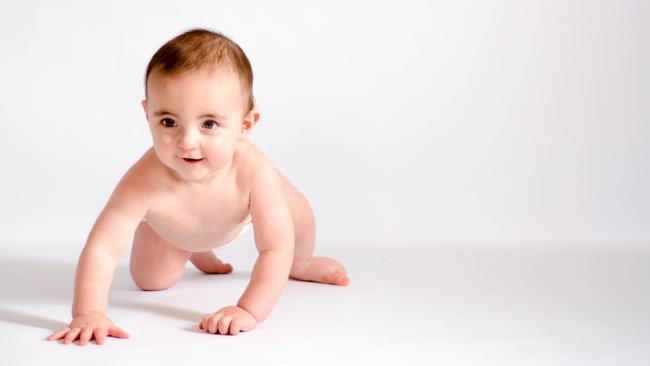
Bridgette Chesters had always longed for a house filled with children. But seven years ago there was a hitch: her husband John discovered he had a condition that made it difficult to conceive and he also carried the cystic fibrosis gene. A sperm donor would be their only hope of having a family.
So the couple got sperm from an Australian donor through an IVF clinic and Chesters fell pregnant with Lola, now four, on the first attempt. Settling on a donor through the clinic was easy, she says. Full blood tests and screening were done and she was matched with three compatible donors.
“There’s no photos and very basic information about them. We chose one that we thought from the description might look most like my husband,” the Sunshine Coast mum explains. “We must have chosen well because when our daughter was born people who didn’t know the situation said how much she looked like him.”
Eager to grow their family, they returned to the clinic in January 2019. But this time it was not so easy. Chesters endured three full rounds of IVF and suffered four miscarriages. “Each time I was left questioning myself and if it was something I was doing, if there was something wrong with me,” she recalls. “It was devastating.”
Over the following two years it cost the couple upwards of $60,000 for IVF, which included $900 to buy each package (known as a “straw”) of sperm as well as legal and counselling costs – mandatory when using donor sperm. With credit cards maxed out and superannuation depleted, Chesters decided a new approach was needed. In January 2021 she took a deep breath and put an ad on the Facebook group Sperm Donation Australia explaining her story.
“It was quite overwhelming at first and you feel very vulnerable, but there are so many men out there looking to help and expect absolutely nothing in return,” she says. “John was a bit apprehensive initially, but once we met our donor, he was fine. It cost us nothing aside from some road tolls and a bottle of scotch,” she laughs, cradling seven-month-old Lawrence who was born from this union.
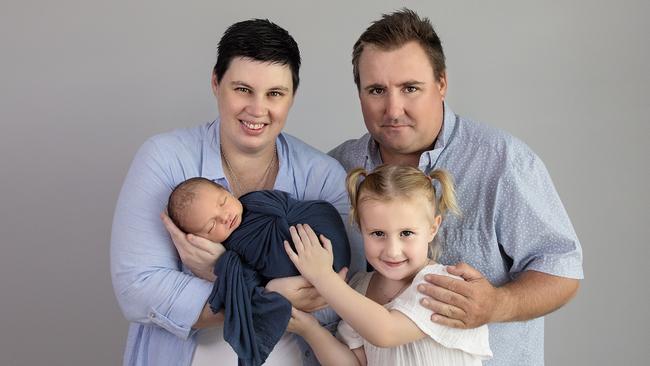
“Using our donor through the group was hands down the easiest thing we’ve ever done. No invasive procedures, no medications, no pressure over numbers. It was relaxed and easy, done at home using a kit we bought for $50 from Sperm Donation Australia with an insemination cup and a syringe. Our donor was willing to go above and beyond for us.”
“Each time I was left questioning myself and if it was something I was doing, if there was something wrong with me. It was devastating”
Chesters, 37, says she and her husband drew up their own agreement with the donor, who from the outset made it clear he wouldn’t seek parental rights. Genetic testing was not undertaken but she was assured he had been tested for other diseases.
“Our donor has been open and honest with us, and if he wasn’t we wouldn’t have proceeded,” she says. What started as writing long missives to the donor before meeting has now blossomed into an ongoing, friendly relationship with him and his partner. “We gained a family when we made the decision to use a known donor, something we will always be grateful for.”
But although the Chesters’ experience was positive, others warn of the risks involved in private donor arrangements. The legal situation is murky. In the case of “prolific donors” there’s a risk of sexual relationships occurring between siblings.
Women and couples are turning to assisted fertility in ever increasing numbers, and demand for donor sperm has soared. In the first nine months of this year, Monash IVF received 60 per cent more inquiries for donor sperm than for all of 2021, and reported a 25 per cent increase in donor sperm inquiries in 2021 compared with the previous year.
As for those using private sperm donors or going overseas for egg donation, exact numbers are impossible to know – it’s unregulated, after all – but there is no question that more and more people are doing that, too. Professor Fiona Kelly, Dean of La Trobe University law school and an expert in family and health law, says lockdowns exacerbated existing low numbers of Australian sperm donors in clinics.
“We have seen an increase year on year of sperm and egg donors, but we’ve seen a bigger increase in demand, largely due to the increase in single women seeking treatment. Single women are the biggest users of donor sperm in Australia,” she says. “As demand outstrips supply in clinics, an increasing number of Australians are turning to the private online market for donors. Private donation has always existed, particularly in the lesbian and gay communities, but the scale of what’s happening now is new. Private sperm donors are donating to many women, easily brought together online through web pages that resemble online dating sites.”
A key player in the online boom is 37-year-old Adam Hooper, a father of two with more than 15 donor children throughout Australia and the world to his name – a number that deeply concerns regulators and some donor-conceived people. Hooper, from Perth, lives a nomadic life travelling around Australia and internationally on “sperm tours”, donating to women and recruiting men. He established Australia’s largest donor community, Sperm Donation Australia, in 2015. The group has more than 15,000 members, and a backlog of people waiting to join. Similar groups exist in the UK and the US.
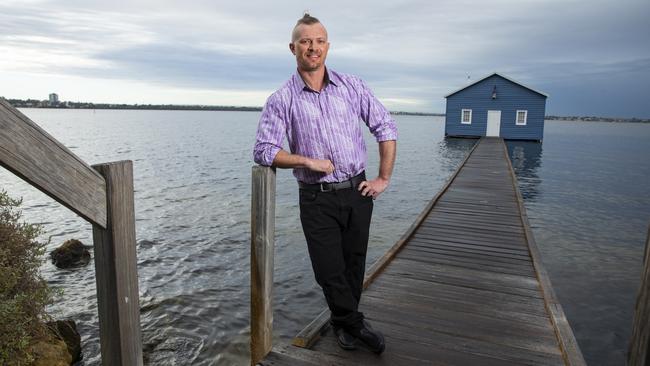
Hooper began on this path after meeting a lesbian couple who explained how expensive it was for them to use a fertility clinic. “Everyone in my family lived until their 90s so I thought it was something I could do,” he says. He makes his money selling home insemination kits and says he’s motivated by helping others and becoming an “icon” in the donor world. His group allows donors and recipients to meet, connect and determine the type of ongoing relationship, if any, they wish to have. In contrast, with a clinic there’s a presumption of anonymity that cuts both ways. “If you donate in a clinic, you don’t have the peace of mind or fulfilment you get donating privately,” Hooper says. “Many men say they donated at a clinic and didn’t think about it, but four years on they wonder about the child.”
In cases where a clinic is used, there are laws regulating contact between donors and the recipient family – but they differ from state to state. Under Victorian law, recipients with minor children can apply at any time for the donor’s identity and, if the donor consents, the information will be released. Donors can also apply for identifying information which will be released if the recipient or donor-conceived offspring consents. If the donor-conceived child is over 18, the donor’s identifying information can be released without consent. In other states, children conceived after 2005 must wait until they are 18, except in Western Australia where it is 16. Parliamentary inquiries in South Australia and Western Australia have recommended legislation similar to the Victorian model and Queensland recently held a hearing covering early contact.
Hooper says his recipients are all connected through a private Facebook group and meet regularly, allowing the donor siblings, or “diblings”, to grow up knowing they are part of an extended family. “When I ask my own children if they want me to stop donating, they say, ‘No’,” he says. “They have a cool life getting to go out with their friends and hold babies and were brought up knowing they would have more siblings than normal.”
Hooper says he vets every member before they join Sperm Donation Australia, as well as enforcing procedures and moderating the group. “We want to see they are decent people,” he explains. “Sometimes I’ll even call them to get a feel for them. Many of the men are already fathers and appreciate the gift of life and how special it is to be a parent.” However, he won’t advise on the laws regarding donor family limits. “When we get enough donors, no donor will have to be relied on to help as many people,’’ he says.
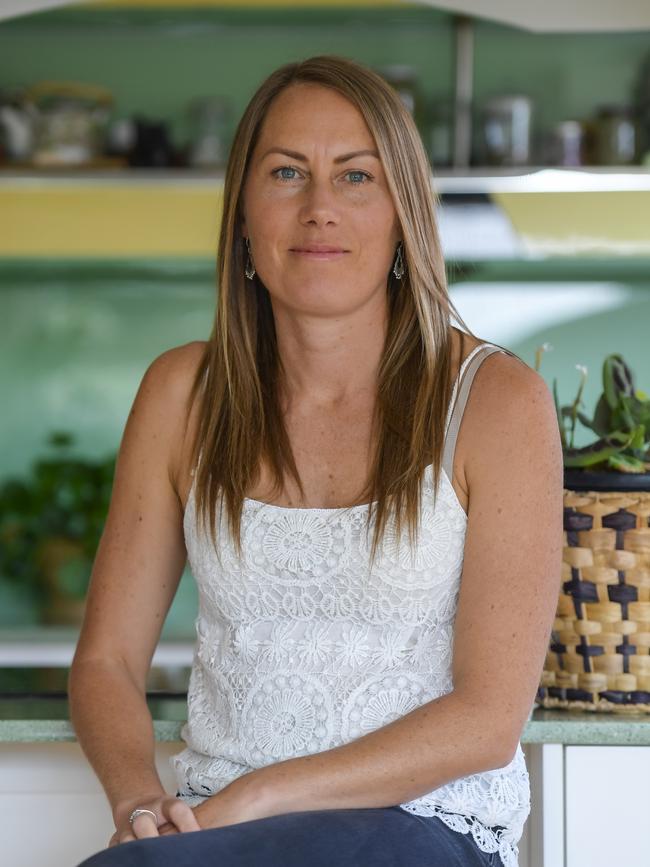
Greta French-Kennedy is typical of many of the women searching online for a sperm donor. The 37-year-old yoga teacher and health coach from Adelaide spent her 20s focused on her career. When she began thinking about having a family in her 30s, the fairytale story of meeting a man, falling in love and having a baby didn’t happen. “I don’t want to put pressure on myself or a man to have a baby immediately. That’s not how love works,” she says. “Ninety-five per cent of men my age or older have had kids and don’t want any more. It’s the reality for me and a lot of women.”
Ready to go it alone, she went to a clinic – but as there were virtually no local donors, it was only able to offer her sperm from California at a price of about $2000, with the total cost rising to $10,000 when IVF fees were included. French-Kennedy looked at the overseas donor database. “I saw these photos of the men as babies. They were total strangers and I thought, ‘This little human [I will carry] is going to be a part of someone else and I have no idea who they are’,” she says. The reality of having to go through the highly medicalised process of IVF also hit home. “My whole business and life is built on natural health and even though my cycle was regular, I’d be injecting hormones into my body, going under a general anaesthetic and creating an embryo in a clinical setting, and it just didn’t sit right,” she says.
She’d been following a lesbian couple on Instagram, and through them she found Sperm Donation Australia. In March this year she put her ad up seeking a donor and 15 men replied. “Adam [Hooper] has very clear guidelines about what to put in a post about the method you want to use, artificial insemination or natural, ie sex, and whether you want to co-parent,” she explains.
French-Kennedy settled on a man who lived nearby and they chatted online before meeting. “He is married and has no children. We had some mutual friends on Facebook. He was fit and healthy, which was most important, and he is a part of a group which looks at the needs of the donor child,” she says. They drew up an agreement stating he was not liable for child support and didn’t want to co-parent but was happy for updates. Unfortunately, after trying for three cycles, she has not been successful. She plans to wait now until the summer and her donor gets more tests done.
The increasing use of overseas egg donation is also provoking an angry response from clinics. Natalie Hart, a 47-year-old from Melbourne, met Glenn, the man she wanted to marry, seven years ago; desperately wanting to start a family, she came off the pill – only to experience her first hot flush. Blood tests showed she was perimenopausal. “It was gut-wrenching. It’s not the news you want to hear when you are trying to start a family,” Hart says. “You know straight away you’re running an uphill battle.”
She began aggressive IVF, but her body didn’t respond to the medication and resulted in two cancelled cycles. Her doctor suggested donor eggs. Hart knew someone who’d used donor eggs in South Africa, so the process was not a complete mystery to her. “The specialist basically said don’t bother buying frozen eggs from the World Egg Bank [the main source of donor eggs at clinics in Australia]. You could try to find a donor here, but it could take some time. She advised us to just go overseas,” Hart explains.
“It was a journey Glenn and I had to research, and work out if that was the right path… when you are new into a world, you know nothing about it – it’s very overwhelming. You don’t know what to take as truth and you are dealing with the loss of your own genetics, but your desire to be a mum is so strong.”
After settling on South Africa, Hart went through an egg donor agency and was able to search its online database and see pictures of the donors as babies or young children, as well as a little biography. “It felt like online shopping in a weird way, but once you start reading the profiles you emotionally connect with them,” she says. Once she had chosen a donor, the agency advised the clinic. The donor underwent testing before Hart started IVF and the donated eggs were then fertilised with Glenn’s sperm.
As Jenson, now four, has grown, Hart has reflected on how much he looks like the donor from the pictures she’s seen of her as a toddler. “He has the donor’s nose and beautiful blue eyes,” she beams. “I feel he’s a very good mix of all three of us and I’m just happy because he’s a beautiful little boy. I do love seeing parts of the donor in him, because if it wasn’t for her, he wouldn’t be here, and I couldn’t imagine life without him.”
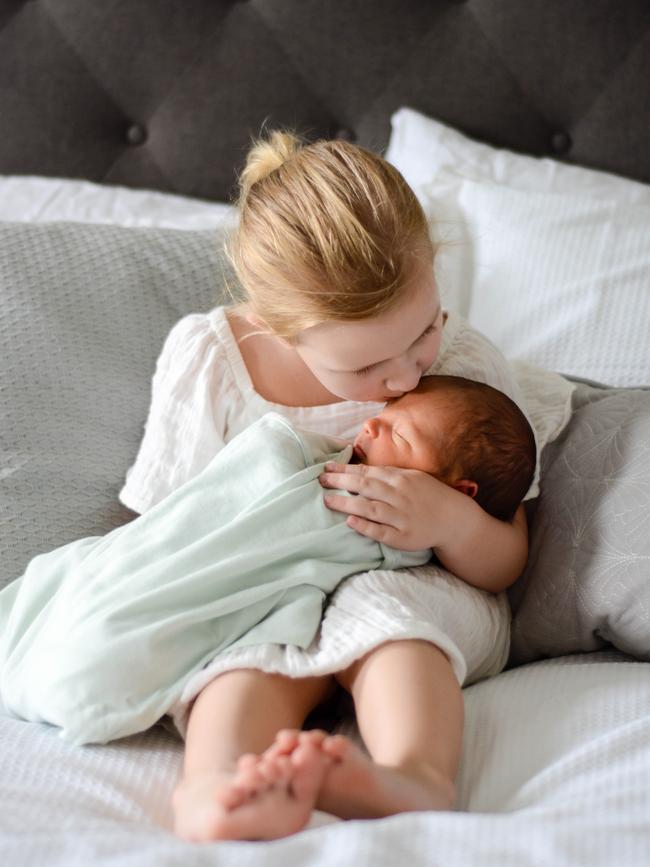
Although Jenson will never know the name of his donor or meet her, Hart was adamant he should grow up understanding how he was conceived, so she has written a book, The Journey to You, to help explain to him. “No one likes secrets. We wanted to normalise the conception. Apart from the way he was conceived he’s the same as any other little boy in the kindergarten,” she says.
Hart, who travelled to South Africa for the fertilisation and implant process, now plans to help other women navigate the egg donor maze through a new online community called The Donor Egg Companion Club. “If it was easier to find donor eggs in Australia, people wouldn’t go overseas,” she says. “But a lot of people do like the uncomplicated nature of going overseas to use an anonymous donor and not needing to have a potentially complicated relationship with a donor here.”
Aimee Shackleton, national director of Donor Conceived Australia, a group that fights for the rights of donor-conceived children, sees problems with using sperm and egg donors found online in Australia. There is a risk that the relationship between the donor and the recipient parents will break down by the time the child is old enough to contact the donor. There is no official record for the child to access when he or she is older. And there’s the issue of prolific donors.
“There is no regulation over the number of siblings, and where the siblings are – so there is a higher chance of consanguineous relationships,” she says. “We’ve heard of very young women collecting sperm in a carpark and going into a public toilet to inseminate themselves. It’s a horrific way for a donor-conceived person to imagine they were conceived.”
Professor Fiona Kelly says Australian laws – particularly in Victoria, the first place in the world to introduce legislation in 1984 to regulate donor conception – are strict and designed to protect all parties. But she concedes the legality around parental rights for male donors is grey. “If the donor is known, the legal situation is unclear. Nothing says he is not a legal parent and nothing says he is. And because there is no second legal parent in a single-mother scenario, there’s no barrier to him becoming a legal parent, as there is where a couple conceive with a sperm donor.”
Even if a donor is not a legal parent, they may still apply for a parenting order if they can satisfy the legal test, says Kelly. “If a donor does become a regular part of a child’s life, over time legal rights will accrue.” A parenting order sets out who the child lives with, how much time the child spends with each parent, parental responsibilities and other welfare matters. “There are cases where parenting orders have been granted to donors who’ve donated to lesbian couples. And if the child is conceived naturally [through intercourse], rather than through artificial insemination, the man is automatically the parent,” she says.
“Agreements couples may draw up themselves don’t have any legal binding, but they do force people to think about potential sources of conflict, highlighting red flags, and they could be used as evidence of intention if there is a dispute.”
Another critic of unregulated donations is Anna MacLeod, CEO of the Victorian Assisted Reproductive Treatment Authority (VARTA). She says it puts recipients’ health at risk by exposing them to sexually transmitted disease, and it denies the rights of the donor-conceived child as well as the donor to have access to information about each other if the recipient doesn’t maintain contact or the donor doesn’t divulge other siblings he may have created.

Last year VARTA was contacted by a distressed donor who’d donated to a couple with an agreement to maintain contact; once the baby was born, they disappeared. VARTA has heard anecdotal reports of donors insisting on sex, rather than providing semen for self-insemination by the recipient; one survey found 58 per cent of women felt pressured into having sex. And then there is the issue of prolific sperm donors in this unregulated field. State laws limit the number of families a donor can create. In Victoria the limit is up to 10 families, including their own. In states without legislation the National Health and Medical Research Council Guidelines recommend limiting donation to 10 families and in other states it’s five families including the donor’s own family.
Professor Kelly says: “When donors are prolific, donor conceived people don’t know who is out there – how many siblings they have or where they are. I don’t think men having as many offspring as possible is in the best interests of the child.”
Professor Luk Rombauts, president of the Fertility Society of Australia and New Zealand, agrees. “The children are the ones forgotten,” he says. “I don’t think when they grow up, they’d be thrilled to know there are 25 ‘siblings’ and are on a Facebook group.” Rombauts is deeply concerned by unregulated donations through online forums. “We are regulated for good reasons,” he says. He has called on the Federal Government to make it a priority to examine what is happening and establish uniform laws across the country. “There is a patchwork of legislation around the country governing how many children a donor can create. Why are we not using the same number everywhere of family limits? There should be a national approach as well as a national donor register,” he says. “People don’t understand the issues of proceeding with outside donations, including donors requesting to be parents – and under law, if done through natural insemination, they are regarded as the parent.”
Rombauts points out, too, that the genetic screening, counselling and protection against infectious diseases that one receives through the clinics is rigorous. “We provide a better service so there is a cost barrier. Running a donor service is labour intensive,” he says. “Why would you cut corners?”
Yet Bridgette and John Chesters say that finding the online donor for their second child was the best decision they could have made, and a more rewarding one than using an anonymous donor through the clinic. “I share photos and videos, have catch-ups and chat nearly every day to our donor,” she says. “I’ve always wanted to thank [first child] Lola’s donor in person, but because he was anonymous I’m not able to. Lawrence’s donor knows exactly how we feel about him and how much gratitude we all have for him.”

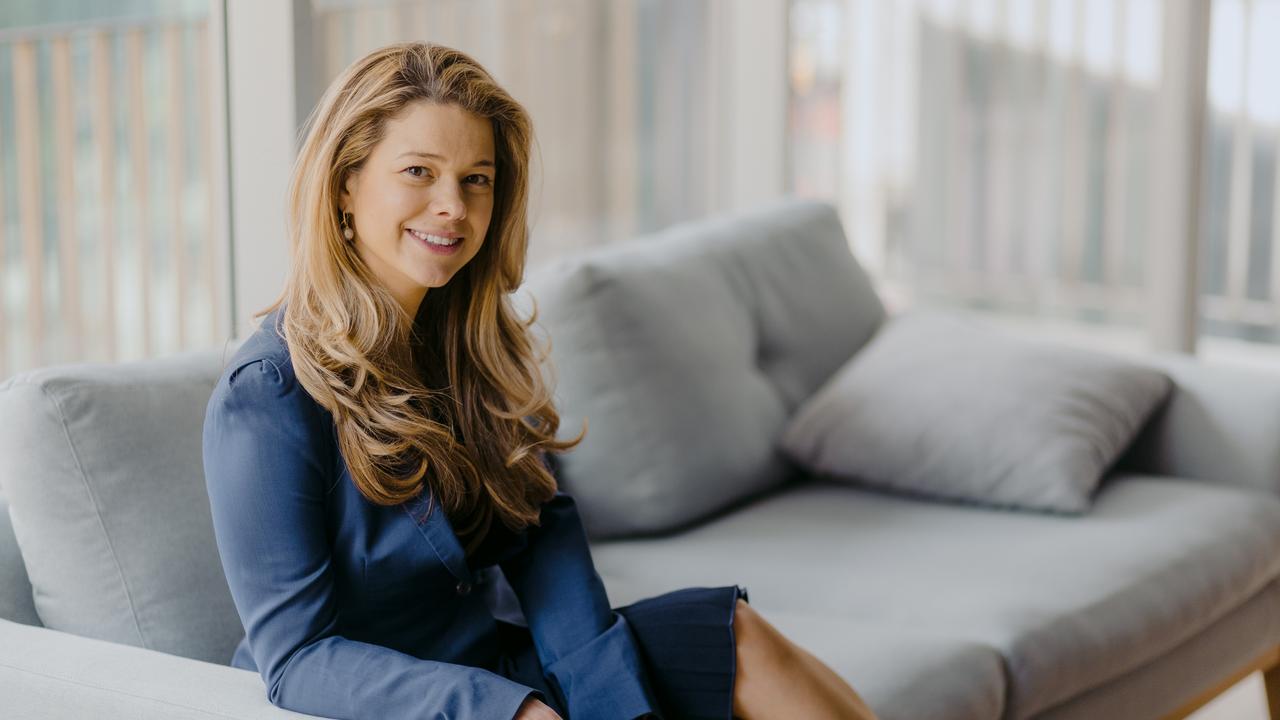

To join the conversation, please log in. Don't have an account? Register
Join the conversation, you are commenting as Logout